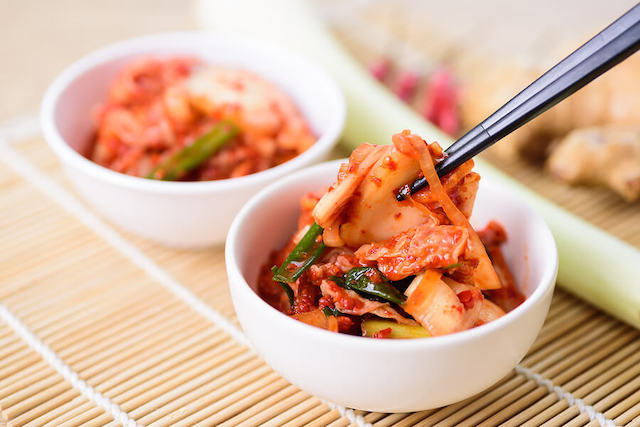Breakfasts around the world look very different. While you may think of bread, eggs and cereal as typical breakfast foods, that’s not the norm everywhere. If you know a little something about Korean culture, you’ll know that they have amazing food, like kimchi, bibimbab, bulgogi, pajeon, and so much more. But what exactly do Koreans eat for breakfast?
The short answer might surprise you: Koreans don’t have a separate category for ‘breakfast food’! Traditionally, a Korean breakfast looks like any other meal in Korea. So, you would typically expect stews, meat, side dishes, and rice. Of course, in today’s times, there are increasingly more people who prefer to grab a sandwich and coffee, or forgo breakfast altogether. But if you’re interested to find out what Koreans usually eat for breakfast, here’s a quick look for you!
1. Soups and stews
Soups and stews are a big favourite for Korean breakfasts. They are easy on the stomach and so comforting to eat. It’s no wonder these are also often dubbed 해장국 (haejangguk) – which means ‘hangover soups’!
These soups and stews can be of almost any variety, from vegetables and tofu, to meats and seafood. Some all-time favourites are 갈비탕 (galbitang) – a hearty short ribs broth, and 설렁탕 (seollongtang) – a milky ox bone soup.
2. Banchan
반찬 (Banchan) is the Korean word for side dishes. You’ll be familiar with these if you’ve been to a Korean restaurant – they are typically served in small saucer-like dishes and encompass a wide variety of dishes, including black beans, kimchi, anchovies, pickled radish, boiled spinach, and so on.
Koreans, more often than not, always have some containers of side dishes stored in their fridge. This makes it easy to whip out some food for a quick meal in the morning. For simple breakfasts, some steamed rice and banchan are all you need.
3. Protein
If you are feeling a little more luxurious, you can have some meat or eggs to go along with your breakfast. The simplest thing to prepare is a sunny-side-up, while some prefer to go with an egg roll. While having meat during breakfast may seem slightly heavy to some people, the Koreans don’t seem to mind even having some 불고기 (bulgogi) or 삼겹살 (samgyeopsal) for breakfast.
A lot of times, these dishes come from leftovers from the evening before. This makes them so much easier to prepare, as all it takes is a short while to heat it up to make it ready for consumption.
4. Snack foods
For those who don’t have much time to prepare breakfast in the mornings, they might opt for smaller bites such as toast or egg bread from street vendors found on their way to work. These varieties of toast can be found with a variety of fillings. Most commonly, they come with omelette, cabbage, and ketchup.
김밥 (Kimbab) is also a frequent favourite owing to its handy size. The rice roll – similar to sushi – is wonderfully easy to pack along to work or eat along the way.
So, if you ever find yourself staying in Korea, now you know what to expect for breakfast! Apart from learning about their food and culture, preparing yourself for a trip to South Korea should also include learning their language. Don’t forget to plan some time for a Korean language course so that you can navigate and converse confidently with the locals!
At Sejong Korean Language school, we are all about imparting Korean language knowledge in interactive and engaging ways. We offer online courses for the time being, and are excited to meet you back in school in July! Begin your Korean language learning journey with us!


